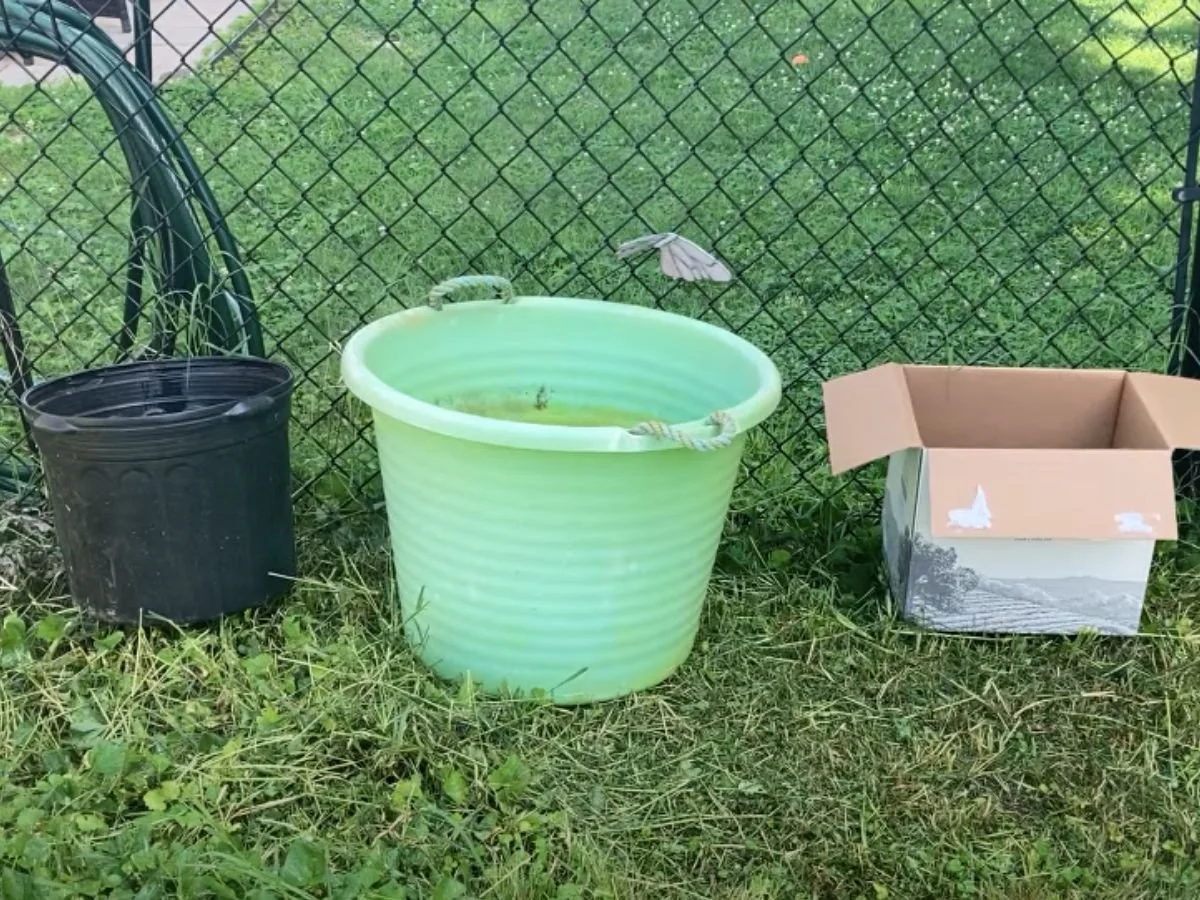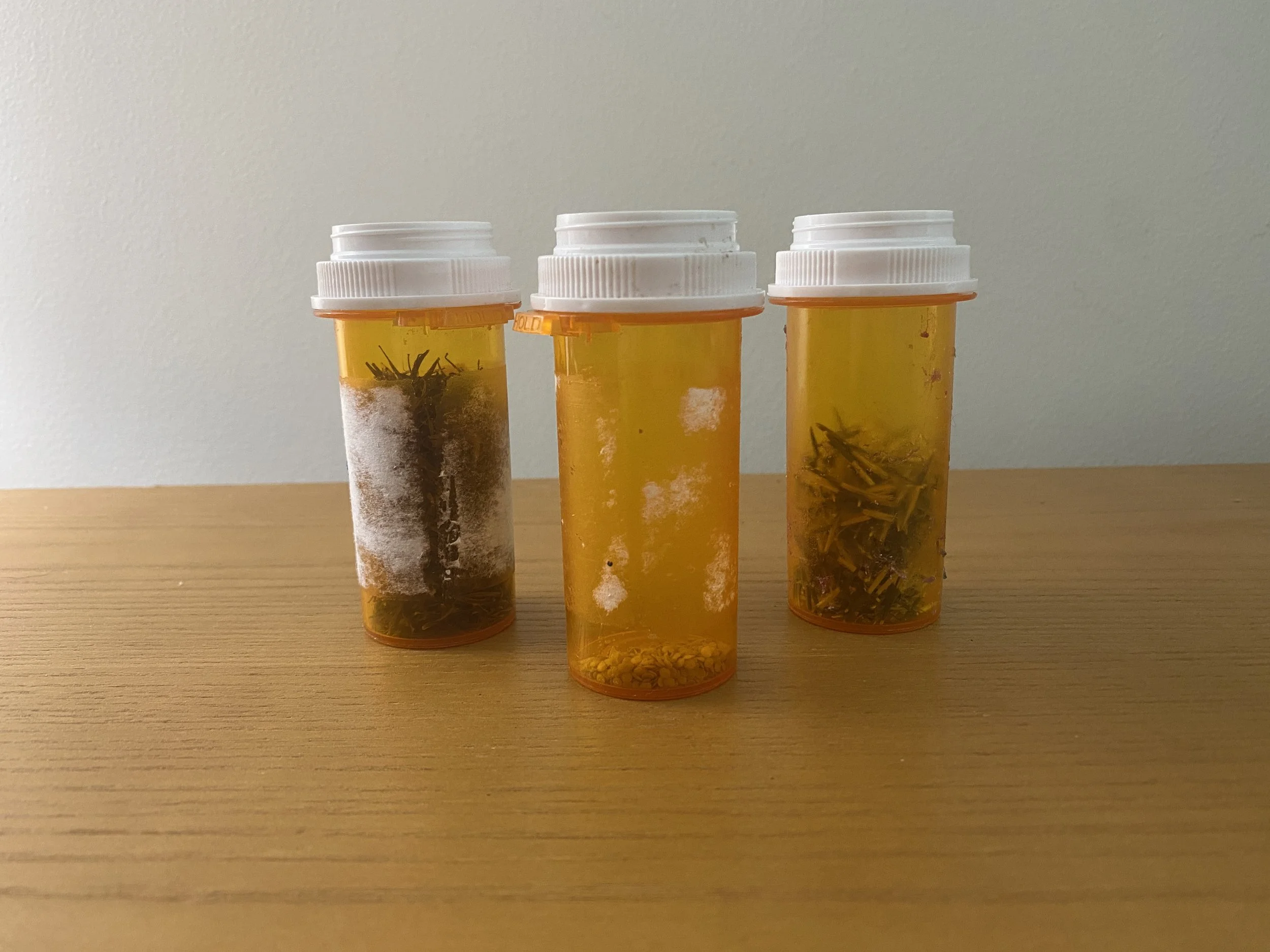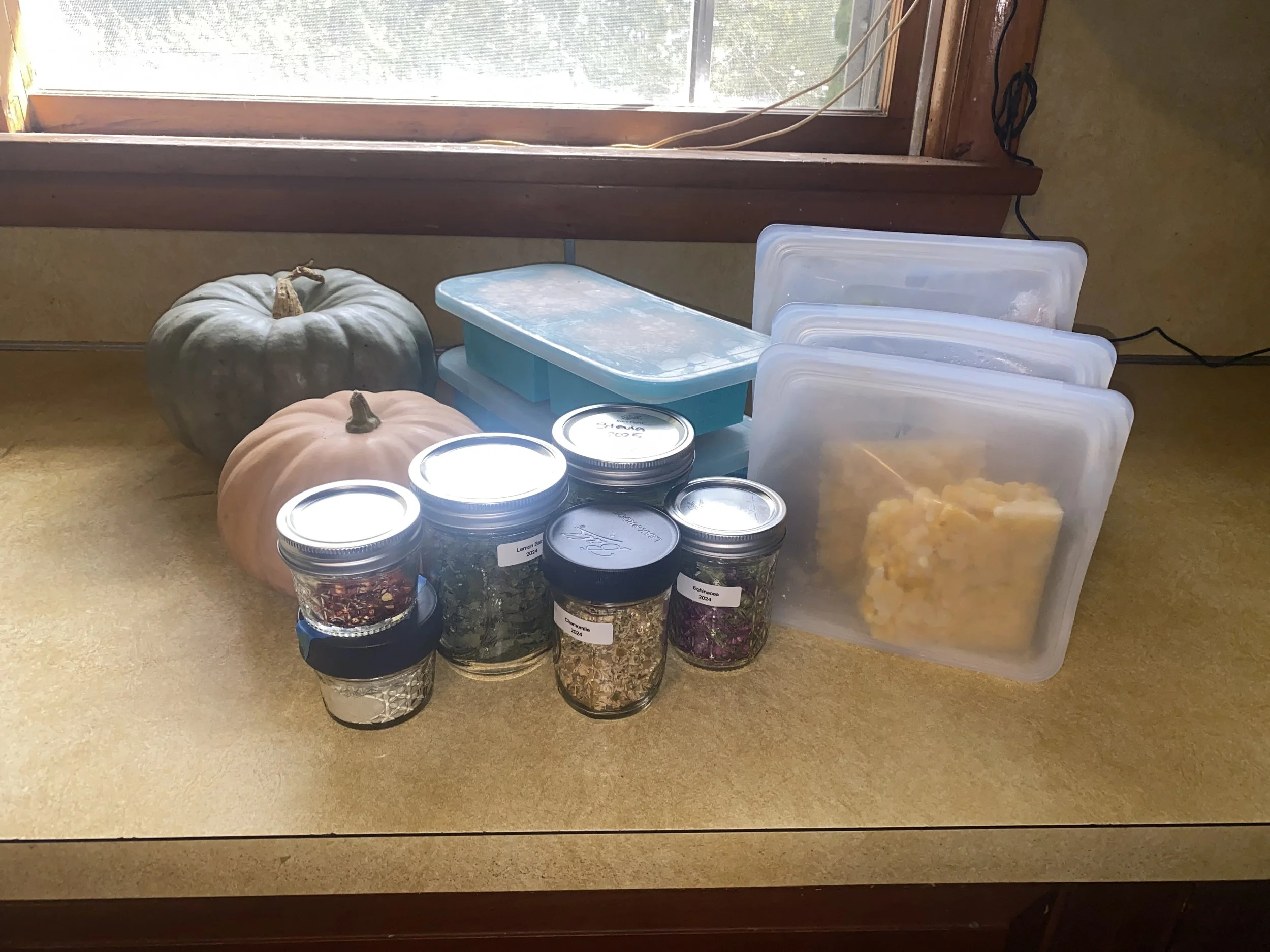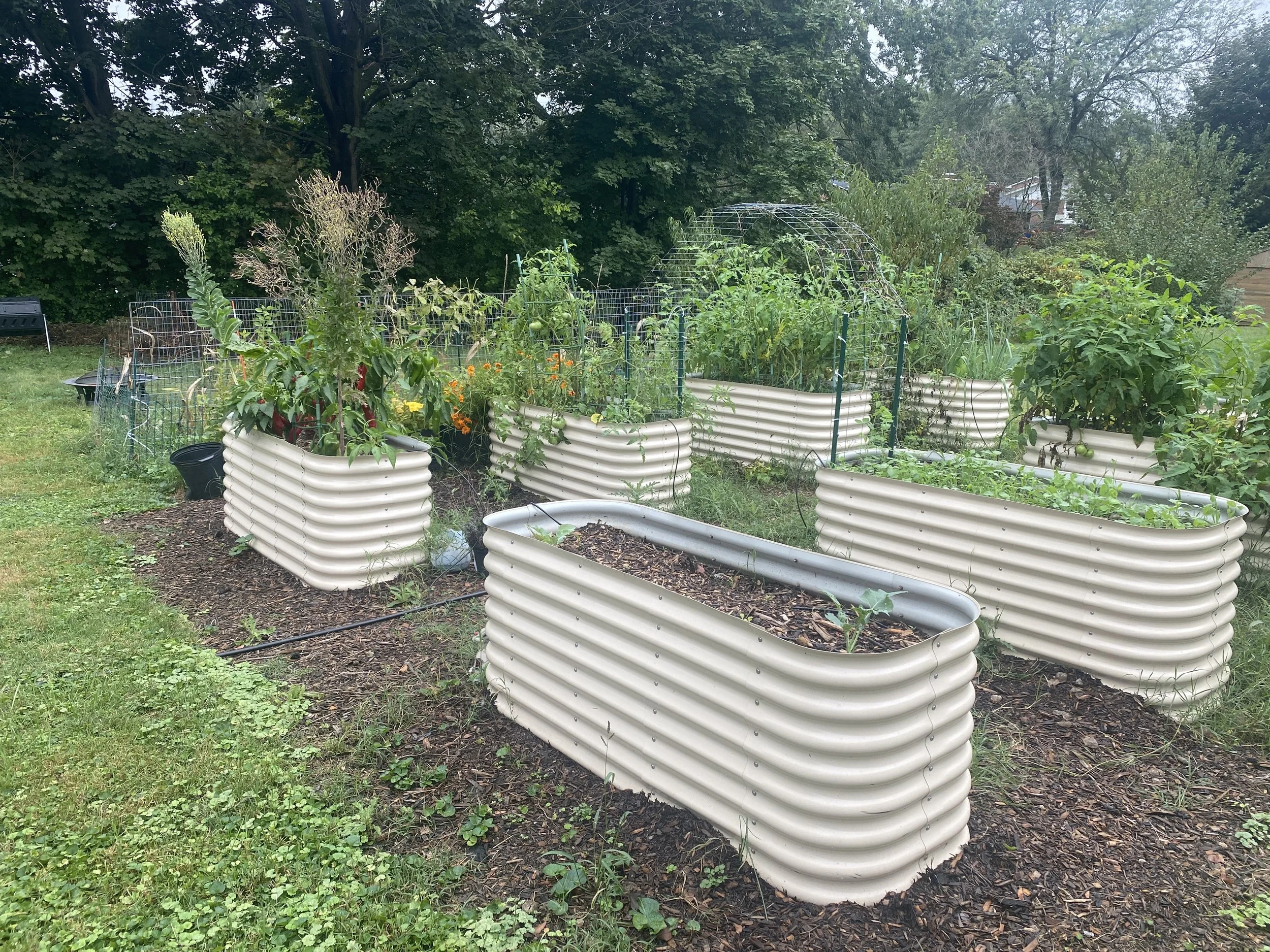7 Items to Repurpose for the Garden
Repurposing items that you already own reduces your waste and household consumption. With a little creativity, almost any item can be repurposed to solve a problem in your home or garden. In this article, we go over seven repurpose projects that we use in our own garden year after year.
What is Repurposing?
Repurposing is when you give an item a new use or purpose that is different from what it was originally intended for. The average American household has approximately 300,000 items. Whether it’s items you no longer use or even packaging from grocery purchases, most items can be repurposed in some way.
1. Repurposing Glass Bottles
Whenever you finish a drink in a glass bottle, don’t just throw it in the recycling. Save those glass bottles and use them to water your garden. In our house, we save every glass bottle that we buy and they’re great for the garden or using in our kitchen. Paired with a terracotta spike, glass bottles can slowly water a garden bed or pot. The water will seep into the terracotta spike and the moisture will transfer to your soil as it dries out. We use glass wine bottles to water all of our potted plants that don’t reach our irrigation lines. We have to refill the bottle 1-2 times per week, but they keep the soil at the perfect moisture level throughout the season. Make sure you use clear glass bottles instead of amber glass, which can warm up in summer heat and cause algae to form.
2. Repurposing Cardboard
Most households have a pile of cardboard waiting to go into the recycling bin, but cardboard is a great item to repurpose in the garden. Cardboard is an essential part to the composting process, providing the “browns” that are needed to break down the “greens”, aka food scraps. We reserve some cardboard to tear up and use in our compost pile throughout the year. Cardboard also makes a fantastic weed barrier that naturally breaks down by allowing worms and other insects in your soil to eat through it. For new garden spaces, we start by laying a layer of cardboard down, watering it, then adding soil and compost on top. As the insects eat into the cardboard and break it down, it kills off the grass or weeds below and creates a nutritious soil for our plants. This method is known as lasagna gardening because you are layering cardboard, soil, and compost to create an optimal environment for your plants. Cardboard boxes can also be turned into planting space. We like to use larger cardboard boxes to grow potatoes each year because we can put them anywhere in our yard. Once the potatoes are harvested, we leave the cardboard to break down naturally or throw it into the compost pile to speed up the process. Whenever using cardboard in your garden, remember to remove any tape or stickers, which often contain plastics that won’t break down naturally. We prefer to use cardboard that doesn’t have any sheen to it, which is usually made from a plastic coating.
Bonus tip: Save your cardboard toilet paper rolls to use for growing plants from seed. Fold the bottoms together and add some soil and your favorite seeds. Once the plant has grown too large for the toilet paper roll, plant the entire thing in your garden space. Your plant’s roots will grow through the toilet paper roll and it will break down into your soil.
3. Repurposing Milk Jugs
If you’re buying milk from the grocery store regularly, why not repurpose those milk jugs into something useful for your garden? We save our clear plastic milk jugs to start off seedlings outside during the winter each year. We live in a zone 7b area, so we usually have frost until mid-April. By using milk jug greenhouses, we can extend our growing season by a few months. To turn them into a greenhouse, cut the milk jug across the middle horizontally, only cutting 90% of the way. This will allow you to open and close the greenhouse easily when you plant your seeds. Poke a few holes in the bottom for drainage and then add nutrient dense soil and your favorite seeds. Close up the milk jug with tape or wrap it with newspaper or cardboard to keep the heat and moisture inside. Remove the screw cap from the top so there is airflow inside for your plants. These mini greenhouses will sustain their environment very well on their own. We only water them occasionally when we notice the soil drying out and the temperature stays considerably warmer inside the greenhouse than outside. Once the weather warms up in spring, we can open up the greenhouses to acclimate the plants to the temperature and then transplant them into our garden.
4. Repurposing Plant Pots
If you’re a gardener, you probably have a pile of old plastic plant pots sitting somewhere in your storage. While we’re not the biggest fans of plastic plant pots, we do occasionally buy seedlings or larger plants from our local garden store and they always come in a plastic pot. This is great for transportation, but people are normally transplanting these plants into another space. We save all of our plastic plant pots to reuse for our seedlings each year or to hold gardening equipment. Having an abundance of plant pots is great when you grow a lot of your plants from seed and gives you options to up pot when your plants need it. If the plastic pots break, we tape them back together and try to use them as long as possible. They also work great for storing garden related items, like plant tags or landscape staples. If you still have too many plant pots after repurposing some, look at your local garden store to see if they accept recycled containers. Our local store has a collection bin outside for anyone to drop pots off and they re-use them for their products.
5. Repurposing Broken Containers
Do you have a broken container collecting dust in your storage? Re-use those for your garden! Over the years, we’ve had containers break, whether it’s cracks on the side or the entire bottom falling off. Most of the time, these containers can be salvaged and used to store something. One of our favorite things to do is use them for planting space. We have a large bucket where the bottom fell out and we thought we would have to throw it in the trash. It ended up being the perfect size container to grow potatoes in. Since it doesn’t have a bottom, we don’t have to worry about drainage and when we’re ready to harvest, we just pick the bucket up and let the soil fall out. Look through your storage and see if you have any broken containers that you might be able to repurpose for planting space.
6. Repurposing Food Grade Barrels
Food grade barrels are large containers that are used by restaurants to hold large amounts of food products. Every spring, you can usually find multiple sellers with these barrels online for very cheap. We purchased 2 barrels from a local seller and turned them into rainwater collection bins. If you are using them for rainwater collection, make sure you are only buying food grade barrels, since some barrels can hold hazardous chemicals that you don’t want in your water or your garden. We verified where the seller got the food grade barrels and then took them home and gave them a good clean. Afterwards, it took about 15 minutes to drill a few holes and install a spigot and mesh cover. We collect rainwater from our gutters, which funnels into the food grade barrels. This has been a fantastic way to reduce our water consumption and we’re able to water almost half of our garden with rain water. There are also options to add irrigation to these rainwater collection systems, so watering your plants can be done automatically.
7. Repurposing Prescription Bottles
We all have to pick up prescriptions from a pharmacy at some point, but what do you do with the empty prescription bottles? We always hated throwing them out after finishing the medicine, so we decided to start cleaning them and keeping them to store small items. Prescription bottles are the perfect size for seed saving. We’re able to collect seeds from our garden and store them in these airtight containers year after year. All of the bottles are small enough that we can store them easily and they can hold a lot of seeds. These bottles also work great for storing other small items, like paperclips or plant tags.
Get Started with Repurposing Projects
Next time you’re going to throw something away, ask yourself if the item could be repurposed in any way. It can be as easy as repurposing a shoe box to hold photos or putting an old, broken container in your garden to add more planting space. Whatever the item is, there is probably a way to repurpose it into something useful. We hope some of these ideas inspire you to repurpose some items from your home.









